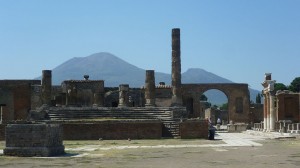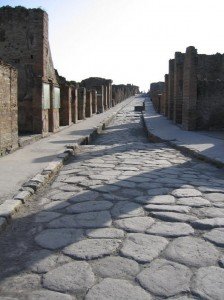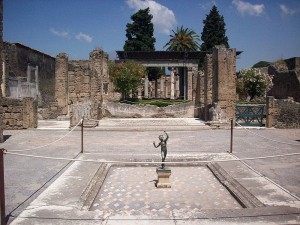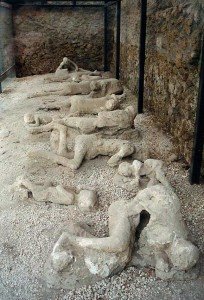The Passion of PompeiI
Seldom have ancient ruins stirred one as do those of Pompeii. The catastrophic eruption that buried this seaside resort town in AD 79 preserved it with remarkable detail. So much so in fact, that it is this town which has provided much evidence of life in ancient Rome for historians to study.

The region of Campania by the Bay of Naples in Italy was no stranger to seismic activity. There was much evidence found during excavations that attested to this fact by repairs done on Pompeii’s temples, water systems, houses and public buildings. Only sixteen years before the deadly eruption of Mount Vesuvius, a massive earthquake caused much damage to the town. But people were quick to forgive nature’s fury and overlook its volatile temper, opting to remain in the thriving resort town that drew many wealthy Romans, merchants and service classes to its lush and fertile grounds.

Walking through the excavated ruins of Pompeii is like stepping back in time almost two millennia ago. Pompeii is the quintessential Roman town complete with a forum, temples, civic buildings, amphitheater, theater, ordered neighborhood blocks comprising of tenements and upper class villas, shops, workshops, taverns, public bath houses, a city wall, and well-kept roads connecting everything inside the luxury city.
Visitors can follow in the footsteps of ancient Romans as they made their way on the streets to buy or sell things from the marketplace. Or as they flocked to the great arena for the games displayed in bloody glory including gladiatorial combats. Or as they went about their daily work and pleasure in the seaside town that was drenched in golden sunlight and endless possibilities. Life was good. Especially for the upper classes.

But on that fateful day in late August of AD 79, all that changed. People stared at the sky when a strange mushroom cloud was spewed from the crater of Mount Vesuvius. They were mesmerized by its colossal size and ominous appearance. Many abandoned the town after the initial earthquakes leading up to the eruption, but others stayed, whether by choice or by obligation.

It was the fallout that buried the town and preserved it with such detail. Freshly baked bread was found to remain in situ in a clay oven. Exquisite frescos and mosaics were uncovered in stunning colors and patterns. Jewelry, homes, and artifacts galore—including armor and weapons from gladiators—have been found buried there. But what is perhaps most touching are the human plaster casts of the people who died there. No matter what artifacts and architecture have been preserved, it is its people that are the most poignant and precious discovery of all. Perhaps because it is a reminder of our own mortality, and of the fleeting nature of this life. It is also a reminder that amid the ruins and ashes of this life, our dreams and desires transcend the boundaries of the moment, linking us with our ancestors across the great sea of time.
Author: Jocelyn Murray